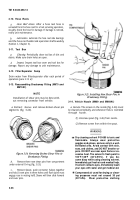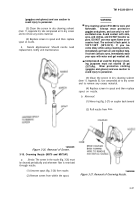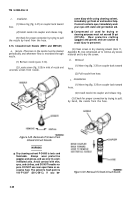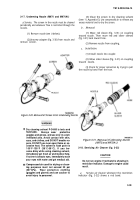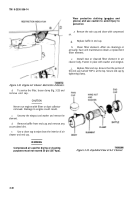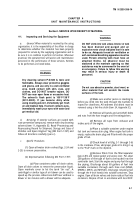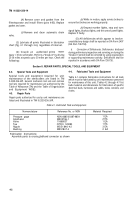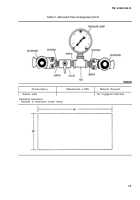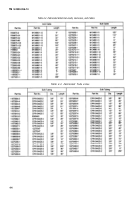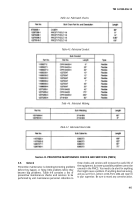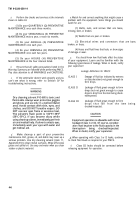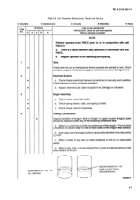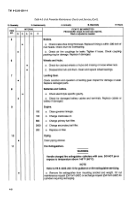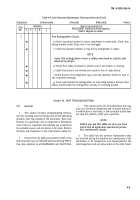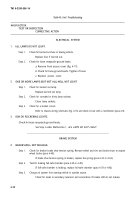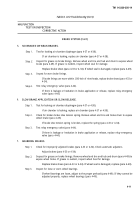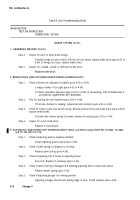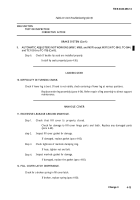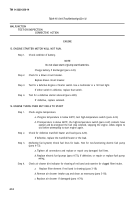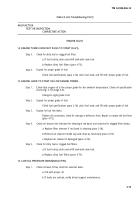TM-9-2330-356-14
SEMITRAILER, TANK: 5000 GALLON, BULK HAUL, SELF LOAD/UNLOAD M967 AND M967A1; SEMITRAILER, TANK: 5000 GALLON, FUEL DISPENSING, AUTOMOTIVE M969 AND M969A1; SEMITRAILER, TANK: 5000 GALLON, FUEL DISPENSING, UNDER/OVERWING AIRCRAFT M970 AND M970A1
TECHNICAL MANUAL; OPERATOR’S, UNIT, DIRECT SUPPORT, AND GENERAL SUPPORT MAINTENANCE MANUAL
OCTOBER 1990
TM-9-2330-356-14 - Page 142 of 528
TM 9-2330-356-14
a.
Perform the checks and services at the intervals
shown in table 4-8.
(1) Do your QUARTERLY (Q) PREVENTIVE
MAINTENANCE once each three months.
(2) Do your SEMIANNUAL (S) PREVENTIVE
MAINTENANCE twice a year, or each six months.
(3) Do your ANNUAL (A) PREVENTIVE
MAINTENANCE once each year.
(4) Do your BIENNIAL (B) PREVENTIVE
MAINTENANCE once each two years.
(5) Do your HOURS (H) PREVENTIVE
MAINTENANCE at the hour interval listed.
b.
Ensure that all safety precautions listed in the
Warning Summary are followed while performing PMCS.
Pay close attention to all WARNINGS and CAUTIONS.
c.
If the semitrailer doesn’t work properly and you
can’t see what is wrong, refer
troubleshooting instructions.
to Section IV for
WARNING
Dry cleaning solvent P-D-680 is toxic and
flammable. Always wear protective goggles
and gloves, and use only in a well-ventilated
area. Avoid contact with skin, eyes, and
clothes, and DO NOT breathe vapors. DO
NOT use near open frame or excessive heat,
The solvent’s flash point is 100°F-138°F
(38°C-59°C). if you become dizzy while
using cleaning solvent, immediately get fresh
air and medical help. if solvent contacts eyes,
immediately wash your eyes with water and
get medical aid.
d.
Make cleanup a part of your preventive
maintenance. Dirt, grease, oil, and debris may cover up a
serious problem. Use dry cleaning solvent (item 11,
Appendix E) to clean metal surfaces. Wipe off excess
grease and spilled oil. Use soap and water when you clean
rubber or plastic material.
e.
Watch for and correct anything that might cause a
problem with the equipment. Some things you should
watch for are:
(1) Bolts, nuts, and screws that are loose,
missing, bent, or broken.
(2) Welds that are poor or broken.
(3) Electrical wires and connectors that are bare,
broken, or loose.
(4) Hoses and fluid lines that leak, or show signs
of damage or wear.
f.
You should know how fluid leaks affect the status
of your equipment. Learn and be familiar with the
following types/classes of leakage. When in doubt, notify
your supervisor!
Leakage Definitions for PMCS:
CLASS I
Seepage of fluid (as indicated by wetness
or discoloration) not great enough to
form drops.
CLASS II
Leakage of fluid great enough to form
drops but not great enough to cause
drops to drip from the item being check-
ed/inspected.
CLASS III
Leakage of fluid great enough to form
drops that fall from the item being
checked/inspected.
CAUTION
Equipment operation is allowable with minor
leakage (Class I or II). Of course, consider-
ation must be given to the fluid capacity in the
item/system
being
checked/inspected.
When in doubt, notify your supervisor.
g.
When operating with Class I or II leaks, continue
to check fluid levels as required in your PMCS.
h.
Class III leaks should be corrected before
releasing equipment for operation.
4-6
Back to Top

